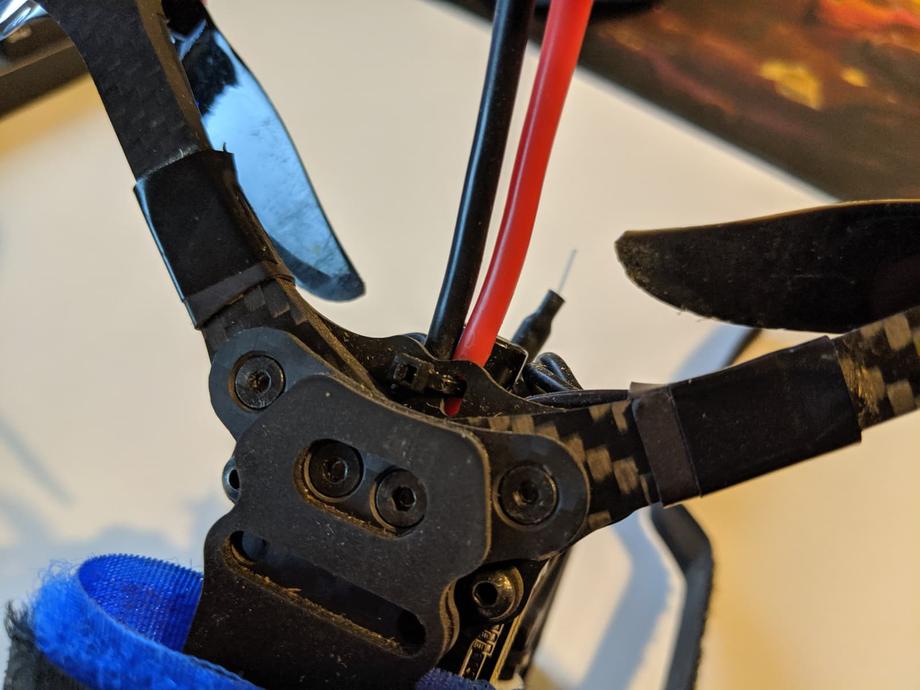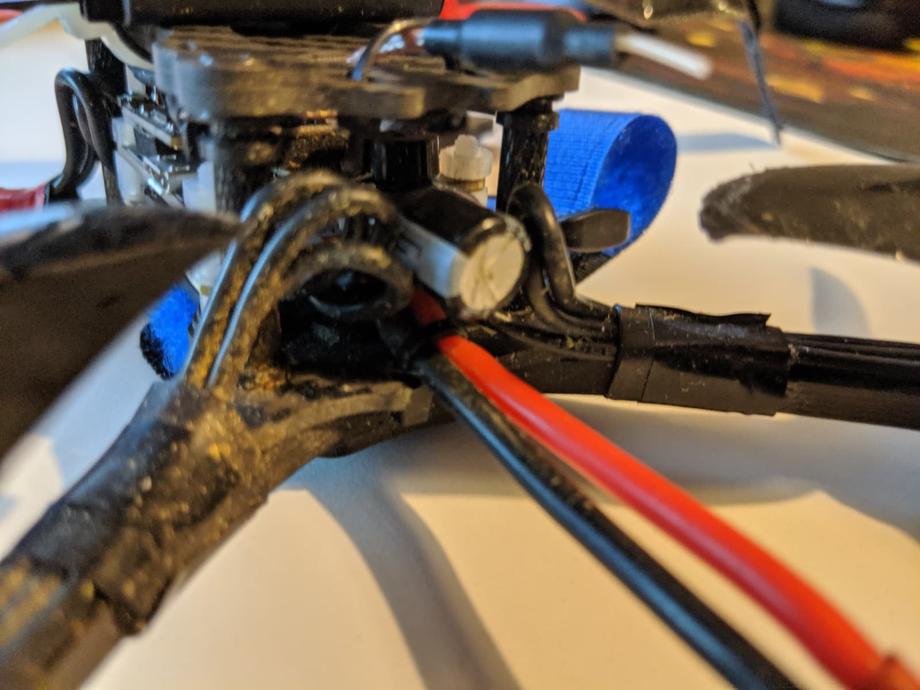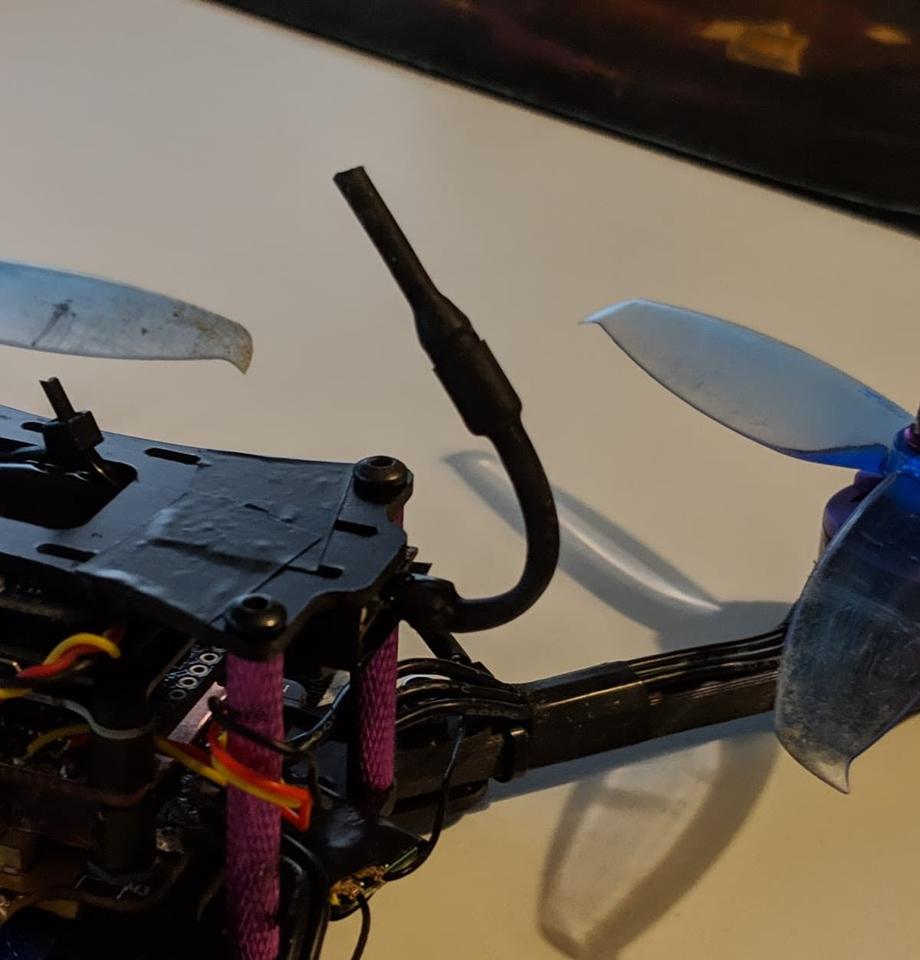FPV Quick Tips
Ask a question below and get your question featured on this page along side its answer.
🔼 RXLOSS flag
I had a question about the RXLOSS flag. Basically this is one of the many possible arming prevention flags that you may see in the goggles’ OSD. It stands for: “No valid receiver signal is detected”. You will need to debug this further and figure out exactly what causes the issue (from disconnects and poor solder joints to fried receivers and so on).
The wiki page also mentions that you may see this also during flight in which case you should treat it as a “critically low signal strength” warning. For information on all the flags check the Betaflight wiki.
🔽 Dynamic stretching
You can accomplish this in many different ways, including your video editing software. My prefered way for dynamically stretching video is to use a free and open source piece of software called Superview. You can learn more in this article.
🔽 May I fork this website project? looks really cool.
This project is open source and you can use it for inspiration and playing around as much as you like. In fact, I have created a Gatsby theme that you can use much easier, by just installing it as a dependency in your Gatsby project. Or fork and work with it, as it does not include any of the copywrited content and will save you hours of removing the irrelevant to you parts.
The article copy is copywrited and if you’d like to use a segment or quote the author, a written permission is required, in which case, you can contact me in a number of ways, including Twitter, YouTube, etc., so check out the about page for more details.
Publishing the entire site as is is also a copyright infrindgement.
🔽 Any suggestion for starting on FPV on a budget? just a pair of googles, and the drone itself.
I’m working on a full length post on this subject as well as a YouTube video on my channel, but here’s a couple of thoughts on this very complicated subject.
Regardless if you are on a smaller or a larger budget it mostly depends on what you want from the hobby. Are you going to be flying 5” quads? Micros / whoops / toothpick style drones? Cinewhoops? Each category is fairly different.
You could pick up a set such as this one from Emax that has goggles, controller and a very decent micro drone for about 150 bucks. That’s not a bad option for getting started. The problem with that is that you will outgrow the goggles and the controller if you stick with the hobby, which also sends that money somewhat down the drain.
My recommendation is to grab a controller like the Taranis X-Lite or Taranis Q X7 or even a Taranis X9D Lite. Those ~ 100 bucks will be the only money you spend on a transmitter in the hobby for many years to come.
For goggles, grab the Skyzone Sky 02C, yes 250 bucks is a bit too much to commit, but they are one of the best options this year and will be good for a few years, plus you can resell them if you decide to cash out of the hobby.
For a drone, I’d strongly recommend something like the Mobula7 HD if HD video and decent flying indoors and outdoors is important for you. Alternatively, there are a lot of good 5 inch quads on Banggood for ~ 150 each with top notch components. Or, if you only wanna fly outdoors but a smaller quad, grab a toothpick like the Geprc Phantom or like Emax Tinyhawk Freestyle.
Happy flying!
🔽 Which fpv racing video channel does not collide with WiFi channels?
Race band channels 6, 7 and 8 are out of the 5GHz WiFi range and if you want to avoid interference with any potential WiFi networks, switching to those channels should get the job done.
🔽 How long can I fly my drone?
If we are talking a 5 inch mini quad with a decent spec and racing parameters and you know what you are doing, I’d say anywhere between 3:00 and 4:30.
If you take it extra easy, cruise and go smooth, might even set a record time, like I did in this video - the longest I have ever flown on a single battery without killing it.
I flew over 8 minutes on a 1500 mAh 4S lipo, and only brought it down to 3.5 volts per cell. That was extreme for me, normally, I take good care of my batteries and fly for about 4:00 - 5:00 minutes per pack, bringing them down as low as 3.6v - 3.6v
🔽 How to strain releaf XT60 battery leads?
This is a very straight-forward process and could easily be underestimated and skipped. However if you don’t skip it might save you from ripping out your battery pads on your flight controller, PDB, or 4-in-1 ESC board.

You want to use some zipties and firmly attach the XT60 power leads to the frame, close to the board. In doing so, you setup an area that would absorb part of any tugging force on the leads, for example during a crash.

🔽 How to flash the Taranis Q X7 internal module(XJT)?
- Go to FrSky’s site and download the firmware (direct zip link).
- Unzip the archive and put it on your radio’s SD card in the FIRMWARE directory.
- From the radio setup screens find the one with the SD card contents and go into the FIRMWARE directory. Long press on the firmware you want to flash and select flash internal module. Pay attention to the EU and US versions.
🔽 How low can I fly my batteries?
I prefer flying mine only up until 3.7v per cell, sometimes I could go even as low as 3.6v but very rarely.
Technically, you can fly them even further, all the way to 3.5v, but I don’t recommend that and it would reduce their lifetime.
🔽 What is a good battery storage voltage?
In general, good long-term lipo battery storage voltage is anywhere between 3.8v - 3.9v per cell for the batteries we use when flying FPV drones or wings.
You should avoid keeping your batteries charged and idle for too long. If you know you won’t be able to use them in the next day or two, it’s better to discharge them to storage voltage.
There are many chargers that support this function, for example I’m using this charger that can charge anything up to 6S and supports discharging and storage voltage.
🔽 How to keep your U.FL IPEX antenna in any position you want?
I’d like to share with you one quick and easy way of fixing a U.FL IPEX VTX antenna to stay in any way you want it to. For example, at a 90 degree angle and up and away from the props, which could be a good thing.

To achieve this, grab a small piece of shrink tube, apply some hot glue all around where the antenna connects to the VTX. Then apply a bit of hot glue all along the antenna up until the thicker part. Finally, slide in the heat shrink, shrink it with a lighter or a heat gun and hold it in place until the hot glue cools off.
I learned about this trick from this video, and so credit goes, where credit is due!